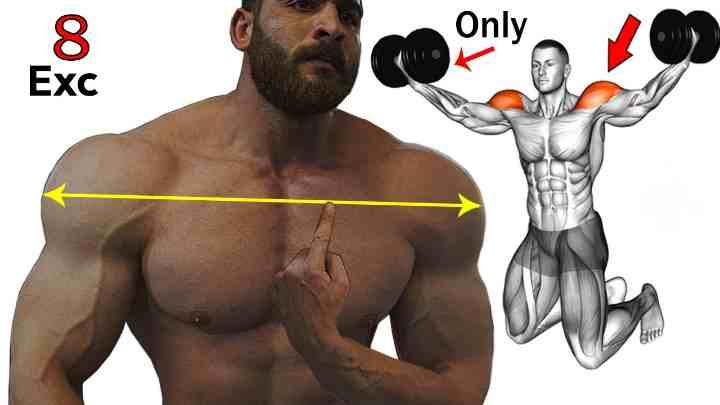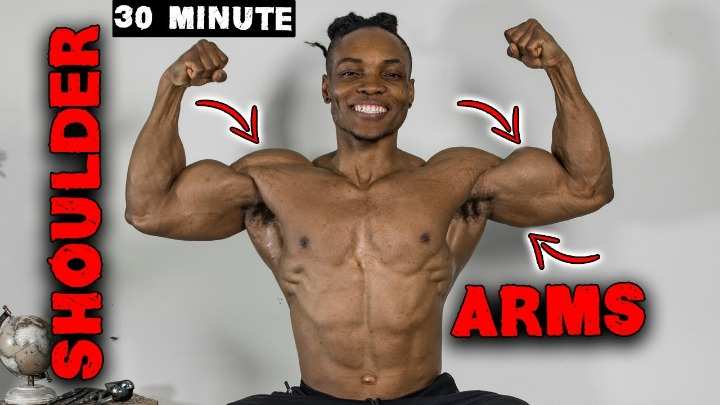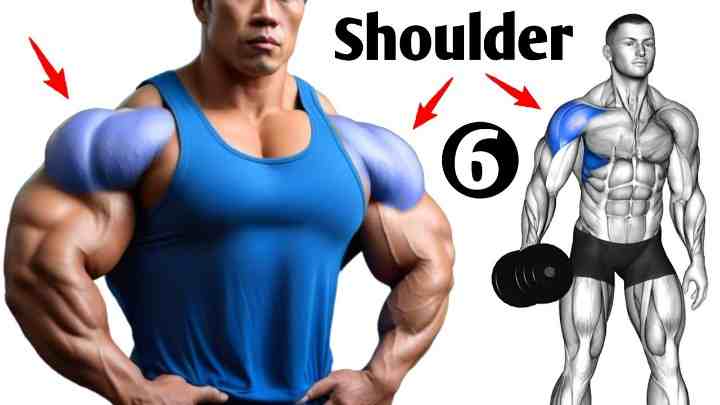In the world of fitness, the debate between Arnold Presses and Lateral Raises is as old as the exercises themselves. Both are renowned for their ability to sculpt and strengthen the shoulders, but which one reigns supreme? Is the Arnold Press, with its comprehensive workout, the undisputed champion? Or does the Lateral Raise, known for its exceptional isolation of the side deltoids, steal the show? In this article, we’ll dive deep into each exercise, comparing their benefits, effectiveness, and potential risks. So, whether you’re a fitness enthusiast or a beginner embarking on your fitness journey, join us as we explore these two popular shoulder exercises and help you decide which one might be the better fit for your workout routine.
What is Arnold Presses?
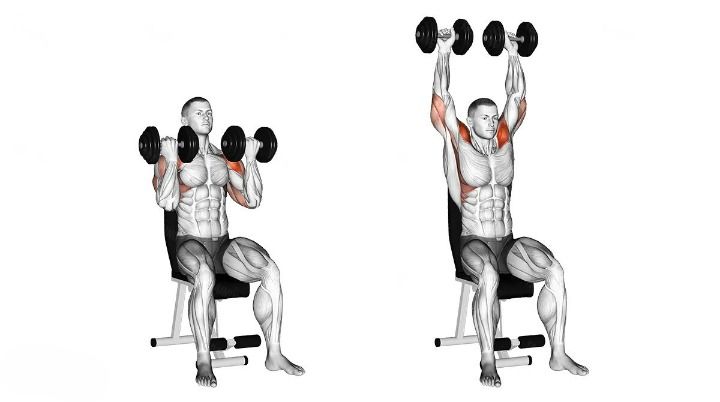
The Arnold Press is a shoulder exercise named after the famous bodybuilder and actor Arnold Schwarzenegger. It is a variation of the standard Overhead Dumbbell Press, but it adds a rotation of the wrists to target all three heads of the deltoid muscles: anterior, lateral, and posterior. It also works the forearms and the triceps as secondary muscles.
To perform the Arnold Press, you need two dumbbells and a bench with back support. Here are the steps:
- Sit on the bench and hold the dumbbells in front of you at about upper chest level, with your palms facing your body and your elbows bent. This is the starting position.
- Raise the dumbbells as you rotate the palms of your hands until they are facing forward. Continue lifting the dumbbells until your arms are extended above you in a straight arm position. Breathe out as you do this.
- Pause for a second at the top, then lower the dumbbells to the original position by rotating the palms of your hands towards you. Breathe in as you do this.
- Repeat for the recommended number of repetitions.
SHOP FOR THE BEST ADJUSTABLE DUMBBELL SET ON AMAZON
The Arnold Press is a great exercise for building mass and strength in your shoulders, as well as improving your shoulder mobility and stability. It can be used as a main movement on shoulder day or as an accessory movement for other presses. You can also perform it standing up, but this is not recommended for people with lower back issues.
What is Lateral Raises?
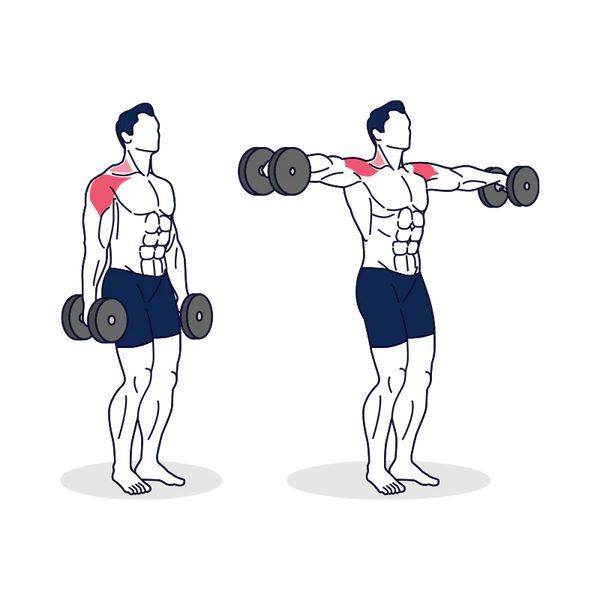
Lateral Raises are a shoulder exercise that targets the lateral head of the deltoid muscle, which is responsible for lifting the arm to the side. They also work the anterior and posterior heads of the deltoid, as well as the trapezius and the forearms. Lateral Raises can help you develop stronger and broader shoulders, as well as improve your shoulder mobility and stability.
To perform Lateral Raises, you need a pair of dumbbells and enough space to raise your arms to the sides. Here are the steps:
- Stand tall with your feet hip-width apart and hold a dumbbell in each hand by your sides, with your palms facing in. This is the starting position.
- Keeping your torso still and your elbows slightly bent, lift the dumbbells out to the sides until they are at shoulder level, forming a “T” shape with your body. Your palms should be facing down at the top of the movement.
- Pause for a moment, then lower the dumbbells back to the starting position in a controlled manner.
- Repeat for the desired number of repetitions.
SHOP FOR THE WORKOUT BENCH ON AMAZON
Lateral Raises are a great exercise to include in your upper-body routine, especially on shoulder day. They can be done after compound exercises that involve the shoulder, such as presses or pull-ups. You can also vary the angle of your arms or the type of dumbbells to target different parts of your shoulder muscles.
Benefits of Arnold Presses
The Arnold Press is a shoulder exercise that has several benefits, such as:
- It maximizes your mass gain by utilizing a fuller range of motion and increasing demand on your shoulder muscles.
- It improves your posture by developing balanced and well-rounded deltoids that prevent your shoulders from rounding forward.
- It increases your range of motion by adding a natural wrist rotation that allows you to lift the dumbbells higher and deeper.
- It enhances your upper body strength by engaging all three heads of the deltoid muscle, as well as the forearms and the triceps.
- It improves your coordination and balance by involving multiple joints and muscle groups in a compound movement.
Romanian Deadlift and Lower Back
The Arnold Press is a great exercise to include in your shoulder routine, especially if you want to build powerful and sculpted shoulders like Arnold Schwarzenegger himself.
Benefits of Lateral Raises
Lateral Raises are a shoulder exercise that has several benefits, such as:
- They contribute to rounded, muscular shoulders that create a V-taper look.
- They improve shoulder strength, flexibility, and joint stability.
- They improve the performance of compound movements that involve the shoulder, such as presses or pull-ups.
- They isolate the lateral head of the deltoid muscle, which is often neglected in other shoulder exercises.
- They correct potential strength imbalances between the right and left shoulders.
- They prevent shoulder injuries by strengthening the rotator cuff muscles and improving shoulder stability.
- They enhance your aesthetic appeal by creating a contrast between your shoulders and your waist, making you look slimmer and more fit.
- They improve your posture by counteracting the effects of sitting and slouching, which can cause your shoulders to round forward and your chest to collapse.
Comparison of Arnold Presses & Lateral Raises
Arnold presses and lateral raises are both popular shoulder exercises that target different aspects of the deltoid muscles. Here’s a comparison of the two exercises:
Muscle Engagement: Arnold Presses engage multiple shoulder muscles, including the anterior, lateral, and posterior deltoids, as well as the trapezius and the serratus anterior. This makes it a more comprehensive shoulder exercise. On the other hand, Lateral Raises primarily target the lateral deltoids, making them an excellent exercise for isolating this specific muscle group.
Difficulty Level: Arnold Presses are generally considered more challenging due to the rotation involved and the number of muscles engaged. Lateral Raises are simpler and easier to learn, making them a good choice for beginners.
Versatility: Arnold Presses are more versatile as they work several muscles at once, contributing to overall shoulder strength and size. Lateral Raises, while less versatile, are excellent for focusing on shoulder width and achieving that desired “V” shape.
Risk of Injury: Both exercises, if performed incorrectly, can lead to injury. However, due to the complexity of the Arnold Press, it may pose a slightly higher risk, especially for those with existing shoulder issues.
Effectiveness: Both exercises are effective for their intended purposes. If your goal is overall shoulder development and strength, Arnold Presses may be more beneficial. If you’re looking to specifically enhance your side deltoids, Lateral Raises would be the better choice.
Equipment Required: Both exercises require dumbbells, but the weight you’ll use may differ. Arnold Presses typically require heavier weights due to the involvement of more muscle groups, while Lateral Raises are usually performed with lighter weights.
Progression and Variations: Both exercises offer room for progression and variations. With Arnold Presses, you can increase the weight or adjust the angle of the bench. For Lateral Raises, you can perform them seated, standing, or even leaning, to challenge your muscles differently.
Impact on Posture: Arnold Presses, due to the engagement of multiple shoulder and upper back muscles, can contribute to improved posture when performed correctly. Lateral Raises, while not directly influencing posture, can help improve shoulder stability, which indirectly benefits posture.
SHOP FOR THE WORKOUT GLOVES ON AMAZON
In summary, both exercises have their place in a well-rounded shoulder workout. Arnold presses offer a more comprehensive approach, engaging multiple muscle groups, while lateral raises isolate and emphasize the lateral deltoids. The choice between them depends on your specific fitness goals, preferences, and any existing physical considerations.
Arnold Presses Variations
The Arnold press is a shoulder exercise that involves rotating your palms as you press the dumbbells overhead. It works all three heads of your deltoids: anterior, lateral, and posterior. There are some variations of the Arnold press that you can try to challenge yourself or target different muscles. Here are some of them:
Seated Arnold press. This variation is done on a bench with a back support. It reduces the involvement of your core and lower body, and allows you to focus more on your shoulders. It also prevents you from using momentum or cheating with your legs.
Standing Arnold press. This variation is done in a standing position, with your feet shoulder-width apart and your knees slightly bent. It engages your core and lower body more, and improves your balance and stability. It also allows you to use more weight than the seated version.
Single-arm Arnold press. This variation is done with one arm at a time, while the other arm holds a dumbbell at your shoulder or rests at your side. It increases the difficulty and intensity of the exercise, and challenges your core and shoulder stability. It also helps you identify and correct any strength imbalances between your arms.

Alternating Arnold press. This variation is done by alternating your arms as you press the dumbbells overhead. It adds variety and complexity to the exercise, and stimulates your muscles differently. It also allows you to rest one arm while the other arm works, which can help you avoid fatigue and maintain good form.
Half-kneeling single-arm Arnold press. This variation is done in a half-kneeling position, with one knee on the floor and the other leg bent at 90 degrees. You press the dumbbell with the same arm as the leg that is on the floor, while the other arm holds a dumbbell at your shoulder or rests at your side. This variation improves your core and hip stability, and reduces the stress on your lower back. It also isolates your shoulder more, and prevents you from using momentum or leaning to one side.
You can try these variations of the Arnold press to spice up your shoulder workout and achieve your fitness goals. Remember to always use proper form, warm up before lifting, and rest your shoulders between sessions to prevent injuries and maximize results.
Lateral Raises Variations
Lateral raises are a great exercise to target your lateral deltoids, which are the muscles on the side of your shoulders. They help you achieve a wider and more defined shoulder appearance. There are many variations of lateral raises that you can try to challenge yourself or work different parts of your shoulders. Here are some of them:
Cable lateral raise. This variation uses a cable machine to provide constant tension throughout the movement. It also allows you to adjust the resistance and the angle of the cable to suit your preference.
Wall press lateral raise. This variation involves pressing one hand against a wall while raising the other arm with a dumbbell. This creates more tension in both shoulders and prevents you from cheating or using momentum.
Three-way lateral raise. This variation involves changing the direction of your arm as you raise the dumbbell. You can do it in front of you, to the side, or behind you. This works different parts of your deltoids and adds variety to your workout.
Landmine lateral raise. This variation uses a barbell attached to a landmine device, which is a pivot point that allows the barbell to move in different directions. You hold one end of the barbell and raise it to the side, keeping your arm straight. This challenges your shoulder stability and strength.
Kneeling lateral raise. This variation is done in a kneeling position, with one knee on the floor and the other leg bent at 90 degrees. You raise the dumbbell with the same arm as the leg that is on the floor, while the other arm holds a dumbbell at your shoulder or rests at your side. This improves your core and hip stability and isolates your shoulder more.
Leaning away lateral raise. This variation is done by leaning away from a sturdy object, such as a rack or a pole, while holding it with one hand. You raise the dumbbell with the other arm, creating a greater range of motion and stretch for your shoulder.
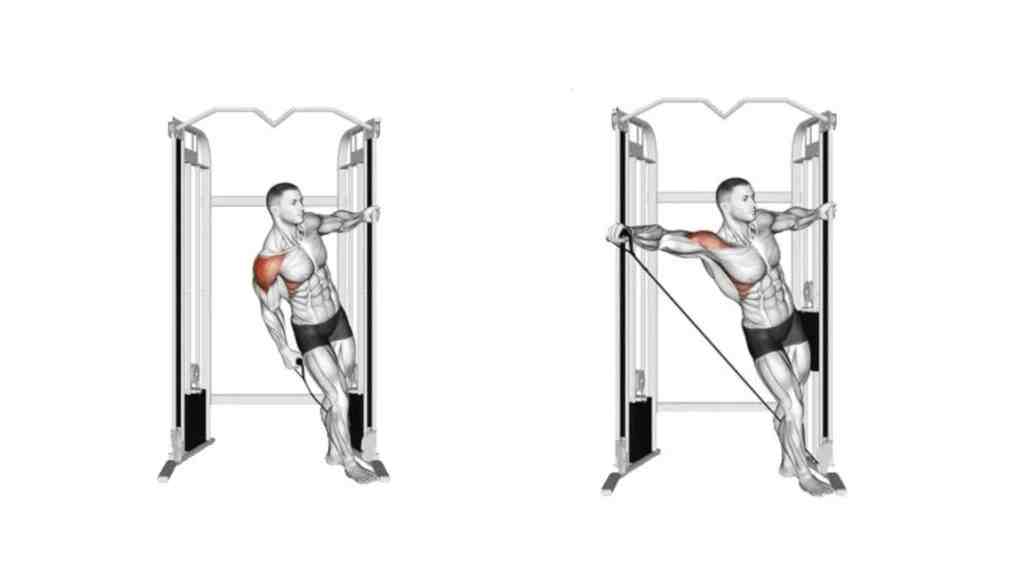
Lateral raise hold. This variation is done by holding the dumbbell at the top of the lateral raise position for a few seconds, then lowering it slowly. This increases the time under tension and the intensity of the exercise.
SHOP FOR THE WORKOUT SUPPLEMENT ON AMAZON
You can try these variations of lateral raises to spice up your shoulder workout and achieve your fitness goals. Remember to always use proper form, warm up before lifting, and rest your shoulders between sessions to prevent injuries and maximize results.
Potential Risks
Both Arnold Presses and Lateral Raises are effective shoulder exercises, but they also carry some potential risks that you should be aware of. Here are some of the common risks associated with these exercises:
- Shoulder impingement. This is a condition where the rotator cuff muscles rub against the bones of the shoulder joint, causing inflammation, pain, and reduced mobility. It can occur when you rotate your shoulders too fast or too far, especially when lifting heavy weights overhead. To prevent this, you should warm up properly, use a moderate weight, and avoid flaring your elbows out too much.
- Shoulder instability. This is a condition where the shoulder joint becomes loose or dislocated, causing pain, weakness, and reduced range of motion. It can occur when you perform shoulder exercises with poor form, excessive weight, or insufficient rest. To prevent this, you should maintain a neutral spine, keep your core engaged, and avoid jerking or bouncing the weights.
- Muscle imbalance. This is a condition where some muscles become overdeveloped or underdeveloped, causing posture problems, joint stress, and injury risk. It can occur when you neglect other parts of your shoulder muscles, such as the rear delts or the traps, or when you favor one side over the other. To prevent this, you should balance your shoulder routine with exercises that target all three heads of the deltoid, as well as the supporting muscles. You should also use the same weight and reps for both arms.
Muscles Worked in Chest Supported Row
These are some of the potential risks of Arnold Presses and Lateral Raises. However, if you perform them with proper form, weight, and frequency, you can enjoy their benefits without harming your shoulders. Remember to listen to your body and stop if you feel any pain or discomfort.
Personal Experiences and Anecdotes
Here, I am sharing my personal experience with these two exercises.
“I remember when I first started my fitness journey, I was overwhelmed by the sheer number of exercises available. I had heard a lot about Arnold Presses and Lateral Raises, so I decided to give them a try. Initially, I found Arnold Presses quite challenging due to the rotation involved, but as I continued to practice, I noticed a significant improvement in my overall shoulder strength and size. On the other hand, Lateral Raises were easier to perform, and they helped me achieve the ‘V’ shape I was aiming for. Over time, I realized that both exercises have their unique benefits and incorporating both into my routine gave me the best results. So, whether you’re a beginner or a seasoned fitness enthusiast, don’t be afraid to experiment and find what works best for you.”
Are Arnold Presses Better than Lateral Raises?
Both exercises are effective for working the shoulders, but they have different benefits and drawbacks. Let me explain.
The shoulder press is a compound movement that involves multiple muscle groups, such as the anterior, medial, and posterior deltoids, the triceps, the lats, and the core. It allows you to lift heavier weights and stimulate more muscle growth. It also improves your overall shoulder strength and stability, which can help you perform other upper-body exercises better. However, the shoulder press can also put more stress on your shoulder joint and rotator cuff, especially if you use improper form or excessive weight. It may also neglect some parts of your shoulder, such as the medial deltoid, which is responsible for the lateral or side-to-side movement of your arm.
The lateral raise is an isolation movement that targets the medial deltoid specifically. It helps you achieve the rounded or 3D shoulder look that many people desire. It also strengthens the supraspinatus, a small muscle that stabilizes the shoulder joint and prevents impingement. The lateral raise is a safer and easier exercise to perform than the shoulder press, as it requires less weight and less range of motion. However, the lateral raise also has some limitations. It does not work the other parts of your shoulder, such as the anterior and posterior deltoids, as much as the shoulder press does. It also does not challenge your core or triceps, which are important for overall upper body strength and function.
So, which one is better? The answer depends on your fitness goals and preferences. If you want to build overall shoulder strength and size, the shoulder press would be a more suitable choice. If you want to isolate and shape your medial deltoid, the lateral raise would be a better option. Ideally, you should include both exercises in your shoulder routine, as they complement each other and provide a comprehensive workout for your shoulders. You can also vary the intensity, volume, and frequency of each exercise to suit your needs and avoid plateaus.
FAQs
Q 1. How often should I perform Arnold Presses and Lateral Raises?
Ans. It depends on your fitness level and goals. A common approach is to include these exercises in your upper body or shoulder workouts, which are typically done 2-3 times per week.
Q 2. Can beginners start with Arnold Presses and Lateral Raises?
Ans. Yes, beginners can start with these exercises, but it’s important to use light weights and focus on proper form. It’s always a good idea to consult with a fitness professional when starting a new exercise routine.
Q 3. How can I modify Arnold Presses and Lateral Raises if they’re too challenging?
Ans. You can modify these exercises by reducing the weight or the number of repetitions. For Arnold Presses, you can also try doing them without the rotation until you build up more strength.
Q 4. Are there any alternatives to Arnold Presses and Lateral Raises for shoulder development?
Ans. Yes, other effective shoulder exercises include overhead presses, front raises, and reverse flyes.
Q 5. How long does it take to see results from Arnold Presses and Lateral Raises?
Ans. This can vary widely depending on factors like your starting fitness level, how often you exercise, and your diet. However, most people start to see improvements in strength and muscle definition within a few weeks.
Q 6. Can Arnold Presses and Lateral Raises help improve my posture?
Ans. Yes, both exercises can contribute to improved posture by strengthening the shoulder and upper back muscles.
Q 7. Can I perform Arnold Presses and Lateral Raises at home?
Ans. Yes, as long as you have a pair of dumbbells, you can perform these exercises at home.
Q 8. What should I do if I feel pain while performing Arnold Presses and Lateral Raises?
Ans. If you feel pain during these exercises, stop immediately. It may be a sign of injury or improper form. Consult with a healthcare professional or a fitness trainer to determine the cause of the pain and how to address it.
Conclusion
In conclusion, both Arnold Presses and Lateral Raises have their unique benefits and potential risks. Arnold Presses offers a comprehensive workout, targeting multiple shoulder muscles, making them an excellent choice for overall shoulder development. On the other hand, Lateral Raises are great for isolating the lateral deltoids, contributing to shoulder width and the desired ‘V’ shape. The choice between the two ultimately depends on your personal fitness goals, physical condition, and preference. Remember, it’s not about which exercise is ‘better,’ but rather which one aligns more closely with your needs. As always, proper form and safety should be your top priority when performing any exercise.

Good day, and welcome to Fitthour. My name is Shubham Vijay, and I am a certified personal trainer and nutrition coach with 6 years of experience in the fitness industry. At Fitthour, we specialize in types of training, such as strength training, cardio, or HIIT, and our mission is to help clients achieve their fitness goals and improve their overall health.

